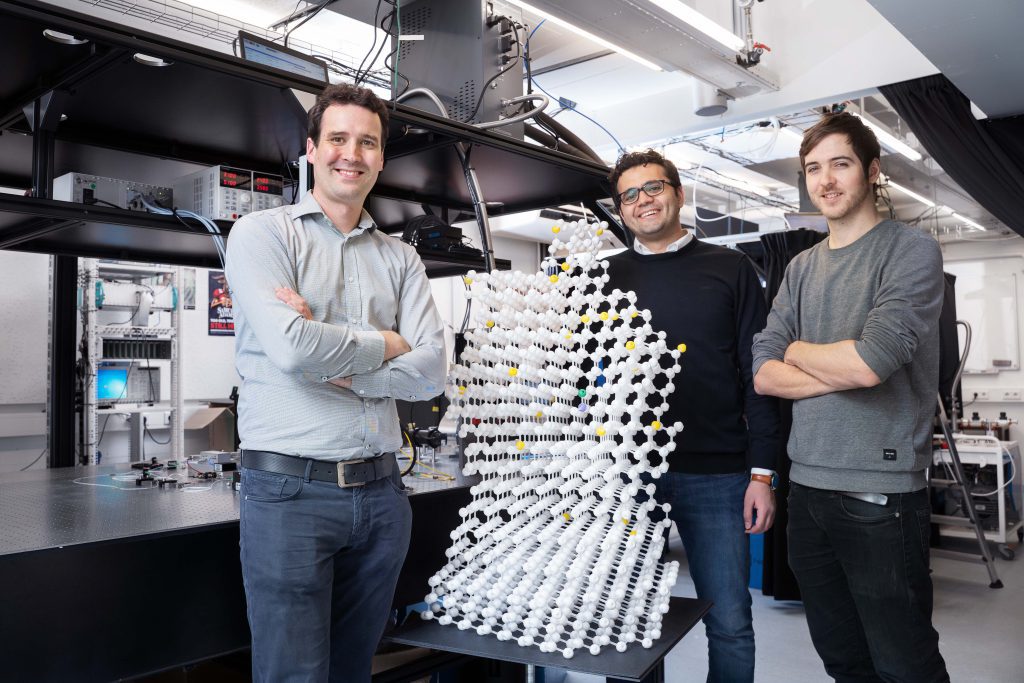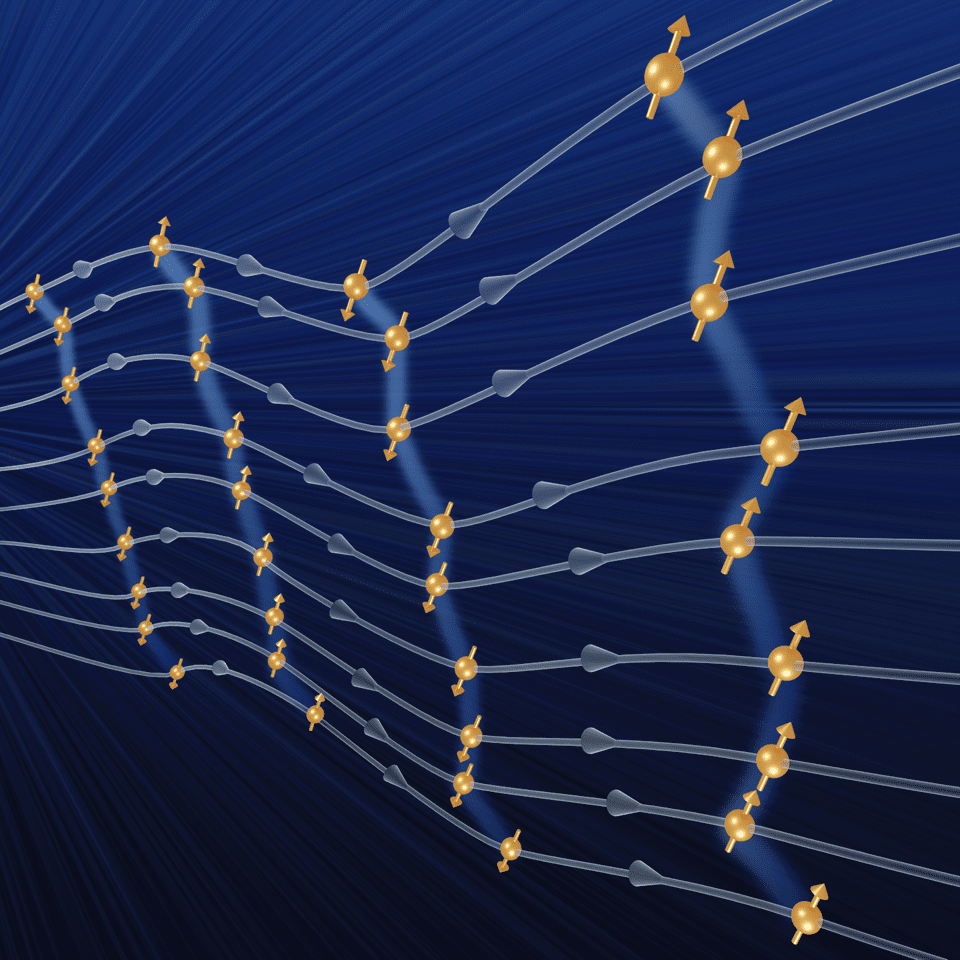04.11.2021Quantum Internet
QuTech creates a time crystal

Researchers from QuTech created a time crystal, a novel exotic quantum phase of matter, using a quantum computer based on diamond. Together with a simultaneous experiment by Google, the results shed new light on the physics of out-of-equilibrium quantum systems. The team reports their findings today in Science.
In the crystals we encounter in our daily lives, such as diamonds or table salt, the atoms spontaneously form a stable repeating pattern in space. Can something similar happen in time?
The idea of a time crystal was first proposed in 2012 by Frank Wilczek, a physicist and Nobel laureate. The ensuing debate led to the prediction that time crystals can form in periodically driven interacting quantum systems. The system is then locked in a stable pattern that oscillates between two discrete states. In such a discrete time crystal, disorder in the internal interactions can prevent the system from reaching thermal equilibrium or heating up. In theory, it can oscillate forever without any net absorption of energy.
A discrete time crystal at QuTech
“We set out to build a discrete time crystal using one of our quantum processors based on spins in diamond,” says Joe Randall from QuTech, a collaboration between Delft University of Technology and TNO. “These spins form extremely well-isolated and individually controlled quantum bits that we can program to emulate other physical systems.” Working together with collaborators from UC Berkeley and Element Six, the team used nine quantum bits and manipulated them in just the right way to satisfy the theoretical criteria to form a time crystal.

When tuned into the right parameter regime, the spins are locked together into a periodically inverting pattern that is robust against perturbations of the system. Importantly, the team then showed that the time crystal formed when starting from all sorts of initial states. “This observation of a robust response for all starting states was really the smoking gun for the time crystal being stabilized by disorder in its internal interactions,” says Conor Bradley, PhD student at QuTech. “It is what distinguishes our results from previous investigations.”

To live very long
The time crystal created by the team lives remarkably long: it lasts up to about 800 periods, or about 8 seconds. “While a perfectly isolated time crystal can, in principle, live forever, any real experimental implementation will decay due to interactions with the environment,” says Randall. “Further extending the lifetime is the next frontier.”
More experimental evidence
Just one month after the researchers went public with their data, a team from Google, Stanford and others reported the realization of a discrete time crystal using a superconducting quantum computer. “It is extremely exciting that multiple experimental breakthroughs are happening simultaneously,” says Tim Taminiau, lead investigator at QuTech. “All these different platforms complement each other. The Google experiment uses two times more qubits, our time crystal lives about ten times longer.” Indeed, theory collaborator Norman Yao from UC Berkeley believes that this is just the beginning, “A time crystal is perhaps the simplest example of a non-equilibrium phase of matter. The QuTech system is perfectly poised to explore other out-of-equilibrium phenomena including, for example, Floquet topological phases.”
What is next?
Many open questions remain. Are there practical applications for time crystals? What will be observed in higher spatial dimensions? And, in general, how do driven quantum systems equilibrate? The spin defects in solids used by the team provide a flexible platform for experimentally studying these important open questions in statistical physics. “The ability to isolate the spins from their environment while still being able to control their interactions offers an amazing opportunity to study how information is preserved or lost,” says Francisco Machado, one of the collaborators from UC Berkeley. “It will be fascinating to see what comes next.”
———
Publication details
This publication in Science is the result of a collaboration of QuTech, University of California Berkeley and Element Six, which grew the ultrapure diamonds described in this work.
J. Randall, C. E. Bradley, F. V. van der Gronden, A. Galicia, M. H. Abobeih, M. Markham, D. J. Twitchen, F. Machado, N. Y. Yao and T. H. Taminiau, 2021. Many-body-localized discrete time crystal with a programmable spin-based quantum simulator. Science 10.1126/science.abk0603 (DOI).
In the media
- Volkskrant (Dutch)

